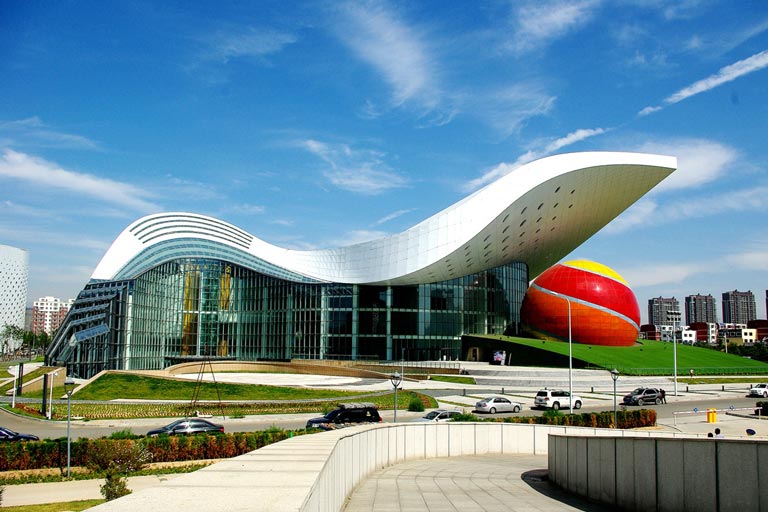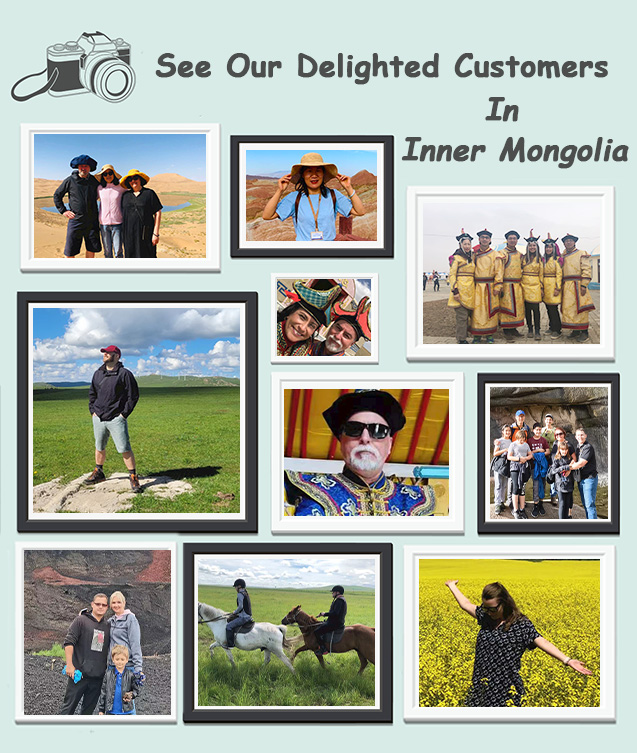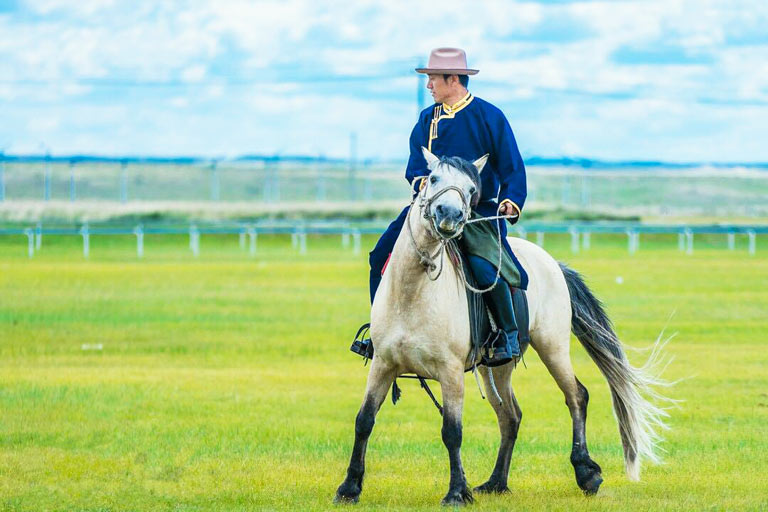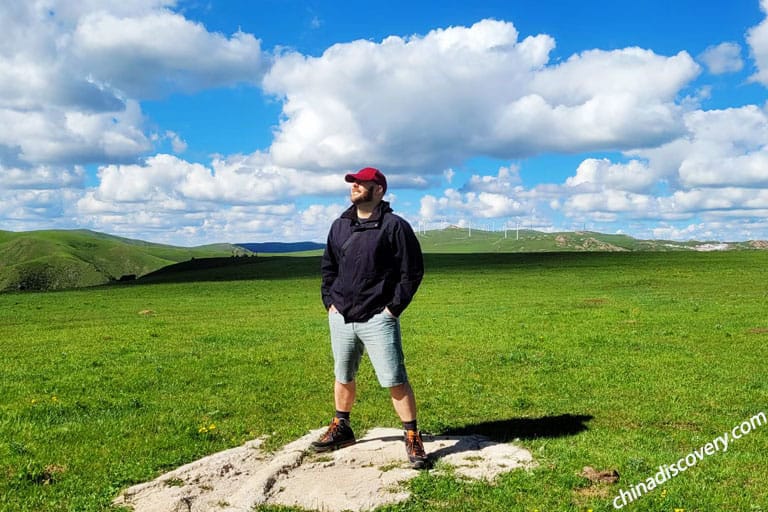Why Visit Dazhao Temple?
Dazhao Temple (大召) is a great Tibetan Buddhist temple in Hohhot, belonging to the Gelug Sect (Yellow Sect). The Han name of Dazhao Temple was originally "Hongci Temple (弘慈寺)", which was later changed to "Wuliang Temple (无量寺)". It is also well-known as the "Silver Buddha Temple (银佛寺)", because a Silver Buddha is enshrined in the temple. Dazhao Temple is the earliest built Gelugpa Temple in Hohhot city. It is also one of the large monasteries built in the early stage of Mongolian conversion to the Gelug Sect, only later than Meidaizhao. It has a great influence in Inner Mongolia.
Dazhao is not only a Buddhist sacred land, but also one of the unmissable tourist attractions in Hohhot and Inner Mongolia. The magnificent Zhaomiao (“召庙” which means Temple) architecture, rich collection of treasures (Silver Buddha, Dragon Carving and Murals), as well as the mysterious Qiamu dance and Buddhist music, emerge together and constitute the unique Zhaomiao culture of Dazhao.
- 3 Days Best Hohhot Tour with Huitengxile Grassland
- 5 Days Classic Inner Mongolia Tour
Best Hohhot, Inner Mongolia Tours with Dazhao Temple Visit:
Layout and Attractions in Dazhao Temple
The layout of Dazhao is in the form of Han Temple, covering an area of more than 30,000 square meters, of which the construction area is over 8,000 square meters. Dazhao Temple has a typical seven-hall layout. Along the central axis, there are buildings like memorial archway, gate to the temple, hall of the celestial kings, Bodhi hall, Jiujian tower, sutra hall, and Buddha hall.
Grand Main Hall of Dazhao Temple
The Main Hall is the only lamasery in the whole temple of the combination of Han and Tibetan architecture style, which is composed of the front hall with three rooms and two floors, the back sutra hall and the Buddha hall in the middle.
There is a 2.55-meter-high silver Buddha statue in the middle of the Buddha Hall. In front of the Silver Buddha is the Tongtian Pillar with flying dragons carved on it. On the left and right of the Silver Buddha are the bronze statues of Tsongkhapa, the Dalai Lama III and the Dalai Lama IV. There are 108 kanjur sutras in the Sutra Hall, as well as various instruments used in a Buddhist mass and medicine utensils cast in copper and gilded. Under the doorstep of the hall, there is a pair of hollow iron lions with their heads held high, which were casted in 1627 A.D., showing superb skills of craftsmen who were building it.
Gate to Dazhao Temple - Horizontal Tablet
Under the eaves of the Gate of Dazhao Temple hangs the famous horizontal table of "The First Spring of the Nine Borders". "The First Spring of the Nine Borders (九边第一泉)" refers to the Yuquan Well in front of Dazhao. According to legend, after Emperor Kangxi quelled the Kardan Rebellion, he passed by Dazhao Temple on his triumphant return, the horses' hoofs stamped on the ground and a spring gushed out. The inscription records the spring water as "The water is light and clear, and the taste of it is sweet and beautiful".
Sakaya Eight Pagodas
Hohhot Dazhao Sakya Eight Pagoda (大召释迦八塔) is located at the intersection of Dazhao Front Street and Dazhao West Narrow Lane. The eight pagodas are white and beautifully shaped. Eight pagodas have meanings and names, each consists of five parts: the base, tower bottle, tower neck, tower fork, tower top. They represent the five aspects of earth, water, fire, wind and air, reflecting the characteristics of Tibetan Buddhism. The eight pagodas were built to commemorate the eight virtues of Buddha Sakyamuni in his life.
.jpg) Dazhao Wuliang Temple (大召无量寺)
Dazhao Wuliang Temple (大召无量寺)
 Horizontal Table of "The First Spring of the Nine Borders"
Horizontal Table of "The First Spring of the Nine Borders"
 Sakaya Eight Pagodas
Sakaya Eight Pagodas
Collections of Dazhao Temple
The collections of Dazhao Temple are extremely rich. Silver Buddha, dragon carvings and frescoes have become the top "Three Marvelous Treasures" of Dazhao Temple. They are historical relics from the Ming Dynasty and have extremely high craftsmanship level and ornamental value.
The Silver Buddha (银佛)
The Silver Buddha, or Sakyamuni statue, which is enshrined in Dazhao Temple, was made by Nepalese craftsmen. The seated Buddha stands 3 meters high and is made of 30,000 taels of pure silver. It is one of the largest existing silver Buddhas in China and has a history of over 400 years. According to historical records, when the Silver Buddha was completed, the Dalai Lama of Tibet, Sonanggyatso, visited here in person and held the "Consecration Dharma Assembly" in honor of the Silver Buddha. Dazhao is therefore known as the "Silver Buddha Temple".
 The Silver Buddha (银佛)
The Silver Buddha (银佛)
Murals (壁画)
Mural painting is another fascinating highlight of Dazhao. The murals are rich in themes and vivid in pictures. The content is based on Buddhist figures and stories, depicting various scenes of heaven, earth and hell. Among them, the mural of “the Buddha and the six heretics compete magic arts” is the most beautiful and fascinating one. The mural can not only be seen as a whole, but also can be seen independently. There are more than 770 figures of gods, Buddhas and mortals, etc. The scene is grand and quite spectacular, which reflects the highest level of painting art in the Ming Dynasty. Murals in Dazhao Temple are painted with natural stone color. Although after hundreds of years, the color is still bright and beautiful.
 Murals (壁画)
Murals (壁画)
Dragon Carving (龙雕)
Dragon carving refers to the two vivid golden dragons carved in front of the silver Buddha on the two pillars. They are about 10 meters high, looking from the bottom up, lifting their paws and baring their teeth, circling around. Dazhao's dragon carving is a unity of form and spirit, which is magnificent and fully shows the exquisite skill of the dragon carving art in the Ming Dynasty. It is said that the dragon carving is made of clay and slurry stone. The craft is sophisticated and it is one of the best in the temple.
 Dragon Carving (龙雕)
Dragon Carving (龙雕)
Besides the "Three Treasures" mentioned above, Dazhao Temple also has the Xuande Incense Burner from the Ming Dynasty, the Dragon and Phoenix Peacock Umbrella used by the Emperor Kangxi of the Qing Dynasty, eight Pearl Palace Lanterns used by Emperor Kangxi, the "Emperor Dragon Medal" of Emperor Kangxi, the Gold-gilded God of Wealth given by Emperor Qianlong, Thangka of the Ming and Qing dynasties and all kinds of instruments and masks used in religious activities...
How to Get to Dazhao Temple
Located at Dazhao Front Street, Yuquan District, Dazhao Temple is near the city center of Hohhot (Xinhua Square), less than 3 km (10~15 minutes by car/taxi).
Hohhot Airport to Dazhao Temple
Hohhot Baita International Airport is about 19 km away from Dazhao Temple. There is no metro or public bus that can take you directly to Dazhao Temple. So taking a taxi or booking a private car in advance are recommended. It takes less than 50 minutes to transfer from Hohhot Airport to Dazhao Temple by car.
Hohhot Train Stations to Dazhao Temple
There are 2 frequently used railway stations in Hohhot, namely Hohhot Railway Station and Hohhot East Railway Station.
Hohhot East Railway Station to Dazhao: Hohhot East Railway Station is about 12 km from Dazhao Temple, which takes 30~40 minutes by car/taxi. You may also take local public buses, but it would cost over 1 hour and you need to walk an extra 1 km to reach the destination.
Hohhot Railway Station to Dazhao: Hohhot Railway Station is the nearest transportation hub to Dazhao Temple in Hohhot. The driving distance is around 4 km, which takes less than 20 minutes by car.
Check more about How to Get to & Get around Hohhot >>
Popular Hohhot Tours:
☛ 3 Days Best Hohhot Grassland Tour with Huitengxile Landscape
 Hohhot East Railway Station
Hohhot East Railway Station
Buddhist Activities in Dazhao Temple
As the most influential Buddhist temple in Hohhot, there are many grand Buddhist events held in Dazhao Temple. During the events, you may have the opportunity to see activities held by the temple, such as Dharma assemblies (法会), baling (巴令), sunning Buddha and Aobao sacrifice, etc. You can also hear the monks chanting sutras, see them circumambulate around the temple, and enjoy the Qiamu dance.
Time Schedule of Buddhist Activities Holding in Dazhao Temple of a Year:
| Time (Lunar Calender) | Activities |
| 8th to 15th January | Prayer Dharma Assembly, chant sutras for 8 days |
| 14th, January | Seeing off Baling Ceremony |
| 15th, January | Sunning Buddha, Chamu Dance, circumambulate around the temple |
| 8th to 15th April | Sakyamuni Birth Commemorate Ceremony, chant sutras for 8 Days |
| 13th May | Aobao Sacrifice Ceremony |
| 8th to 15th June | Dharma Chanting Assembly, chant sutras for 8 days |
| 14th June | Seeing off Baling Ceremony |
| 15th June | Sunning Buddha, Chamu Dance, circumambulate around the temple |
| 14th to 17th August | Mani Dharma Assembly, chant sutras overnight |
| 23th to 25th October | Tsongkhapa Parinirvana Commemorate Ceremony, chant sutras |
| 23th November | Festival of the Kitchen God |
| 25th November | Buddha Dipamkara |
| 30th November | Night Chanting, welcome the God of Wealth in the morning |
(Notice: Information given above is only for your reference, might change according to the real situation, feel free to contact us for more accurate news.)
Sunning Buddha (晾大佛)
Sunning Buddha is a grand Buddhist activity held twice a year in Dazhao. Every year on the fifteenth day of the first lunar month and the fifteenth day of the sixth lunar month, Dazhao will carry out a picture of Maitreya (the Future Buddha), which is 20 zhang long and 1.5 zhang wide, and hang it in front of the temple hall to enjoy the sun bath. During the event, a Buddhist ceremony will be held in front of the Buddha statue. All the monks will chant sutras and pray and perform Dharma music. Believers attending the assembly should worship, present hada, and offer money and goods to the big Buddha. This activity not only gives believers a chance to admire Buddha's face and bathe in Buddha's grace, so as to achieve the purpose of promoting Buddhism, but also enables the Buddha paintings to be exposed to the smooth wind and warm sun, playing the role of mothproof. So that the Buddha can be better preserved.
 Sunning Buddha (晾大佛)
Sunning Buddha (晾大佛)
Chamu Dance (跳恰木)
Chamu Dance is a Buddhist activity of Dazhao. The event has layers of meaning, such as fighting ghosts and exorcising evil spirits, celebrating the harvest and wishing good luck for the coming year. Every year in the first month and the sixth month of the lunar calendar, Dazhao holds two large-scale activities. During the dance, dancers dress up in special costumes, wear masks and dress up as various deities, dance to the accompaniment of tuba, big cymbals and huge leg horn, etc.
 Chamu Dance (跳恰木)
Chamu Dance (跳恰木)
Seeing off Baling (送巴令)
Seeing off Baring, means “sending ghosts”. It is a unique Buddhist activity of Tibetan Buddhism. Dazhao holds a Baling-sending event twice a year in the first month and the sixth month of the lunar calendar. "Baling", is an image of a devil with a three-pronged body made of oil paste and a skull head. When sending the Baling away, monks need to chant sutras and pray first, and then two men carried Baling from the temple to the square, dancing Chamu to exorcise demons. After the dance, Baling will be carried out of the temple gate and burned with fire. Sending Baling means to sending away bad luck and diseases in a year. The whole event scene is lively, the audience gathered like tide.
 Seeing off Baling (送巴令)
Seeing off Baling (送巴令)
Attractions around Dazhao Temple
Xilituzhao
- Address: North end of the Stone Lane, Yuquan District, Hohhot (呼和浩特市玉泉区石头巷北端)
- Distance to Dazhao Temple: 100~200 meters, which takes less than 5 minutes on foot.
Xilituzhao Temple (席力图召) is named after the First Living Buddha, the teacher of the Fourth Dalai Lama, who presided over the temple for a long time. It was built in the reign of Longqing and Wanli year of the Ming Dynasty and was granted by the Kangxi Emperor. Xilituzhao is located diagonally opposite to the Dazhao Temple. The two are separated by only one road (5 minutes by foot). Zhaomiao, with a floor area of 5,000 square meters, is one of the largest temples in Hohhot. With a building area of over 5,000 square meters, it is one of the largest temples in Hohhot.
 Xilituzhao Temple
Xilituzhao Temple
Five-pagoda Temple
- Address: Xiaozhao Front Street, Yuquan District, Hohhot (呼和浩特市玉泉区小召前街)
- Distance to Dazhao Temple: about 1 km, which takes about 10 minutes by car and 20 minutes on foot.
The Five-pagoda Temple (五塔寺) was first built in the fifth year of Emperor Yongzheng's reign in the Qing Dynasty. It’s a Buddhist pagoda building with 5 exquisite sarira pagodas built on the Vajrasana, known as the Five Pagoda. It is the landmark building of Hohhot.
 Five-pagoda Temple
Five-pagoda Temple
Inner Mongolia Museum
- Address: No.27 Xinhua East Street, Xincheng District, Hohhot (呼和浩特新城区新华东街27号)
- Distance to Dazhao Temple: about 9 km, which takes 30 minutes by car.
Located in the center of Hohhot, the Inner Mongolia Museum (内蒙古博物院) is a comprehensive museum of provincial level. The building of the Inner Mongolia Museum is not only rich in ethnic characteristics, but also has modern consciousness. The Inner Mongolia Museum is one of the earliest museums established in ethnic minority areas in China. As early as the 1950s, it was listed in the History of World Architecture. The museum is also rich in collections, and it is a must-visit place for understanding the history and culture of Inner Mongolia.
 Inner Mongolia Museum
Inner Mongolia Museum
How to Plan a Hohhot Tour
Best Time to Visit Hohhot: May ~ October, especially in June, July, August and September…
How to Get There: Flights from Beijing (1.5h), Shanghai (2.5h), Harbin (4.5h), Guangzhou (3.5h), etc. and bullet train from Beijing (2.5~3h), Datong (2.5h), etc.
Usually, visitors spend 2~3 days to visit Hohhot, including one day to explore the highlights in the city, like Dazhao Temple and Inner Mongolia Museum, and 1~2 days to have fun at the nearby grasslands, like Huitengxile Grassland or Xilamuren Grassland.
☛ 3 Days Best Hohhot Grassland Tour with Huitengxile Landscape
☛ 2 Days Huitengxile Grassland Tour from Beijing by Bullet Train
If you have 1~2 days more day, you are highly suggested to add Kubuqi Desert into your trip. Kubuqi Desert is one of the best deserts in China. You can enjoy colorful activities there, like riding camels, hiking, playing sands, etc.
☛ 5 Days Classic Inner Mongolia Tour (Hohhot / Huitengxile Grassland / Kubuqi Desert / Ordos)
Feel not enough? You can spend one day more to Ordos to explore the legend of the great Mongolian conqueror Genghis Khan, 1~2 days more to Xilingol to discover the UNESCO World Cultural Heritage Site - Site of Xanadu, 3~5 days more to Hulunbuir to meet the most beautiful grassland in China and visit fabulous wetlands , forests and Russian Nationality Villages. Have your preferences about Hohhot and Inner Mongolia? Please feel free to tell us your likes and let our experienced travel consultant customize a tour for you!
☛ 6 Days Inner Mongolia Bests Discovery Tour (Hohhot / Ulanqab / Huitengxile Grassland / Baotou / Kubuqi Desert / Ordos)
☛ 5 Days Best Hulunbuir Tour with Grassland Exploration (Hulunbuir)
☛ 6 Days Inner Mongolia Best Desert & Grassland Tour (Hohhot / Baotou / Kubuqi Desert / Hulunbuir)
Travel Hohhot with China Discovery
Hohhot and Inner Mongolia differ a lot with the classic China you know. And it is not an easy job to arrange the daily flight, train and car travel at this relatively vast land. Therefore, travel with a professional travel agency is usually the best way to visit there. We China Discovery know Hohhot and Inner Mongolia a lot and we are experienced in organizing tours to this region. If you need any help, please feel free to contact us! Private cars, one-to-one guide and travel consultant… Everything is only for you and your group or family! The tour is customized by your interest, budget, plan and every special need!
 Local Private Transfer Service
Local Private Transfer Service
Hohhot Travel Guide
- Popular Hohhot Tours
- Hohhot Travel Guide
- Top Attractions
- Things to Do
- Huitengxile Grassland
- Xilamuren Grassland
- Inner Mongolia Museum
- Get to Hohhot
- Hohhot Baita International Airport
- Beijing to Hohhot
- Hohhot to Baotou
- Hohhot to Ordos
- Weather & Best Time
- Hohhot Where to Stay
- Hohhot Maps
- Hohhot Tour Plan
More about Inner Mongolia Travel Guide
- Popular Inner Mongolia Tours
- Inner Mongolia Travel Guide
- Top Cities & Destinations
- Hot Attractions
- Things to Do
- Famous Grasslands
- Top Deserts
- Transportation
- Weather & Best Time
- Hotels & Where to Stay
- Maps
- Photos & Landscpaes
- Travel Tips
- Foods
- Naadam Festival
- Horse Riding
- Mongolian Yurts
- Inner Mongolia Tour Plan
Recommended Hohhot Tours
Top 3 Hohhot tours chosen by most customers to explore Hohhot in the best way. Check the detailed itinerary, or tailor your own trip now with us.

6 Days Inner Mongolia Bests Discovery Tour
Hohhot / Ulanqab / Huitengxile Grassland / Hohhot / Baotou / Yemingsha of Kubuqi Desert / Ordos

3 Days Best Hohhot Grassland Tour with Huitengxile Landscape
Hohhot / Huitengxile Grassland / Hohhot

5 Days Classic Inner Mongolia Tour
Hohhot / Huitengxile Grassland / Yemingsha of Kubuqi Desert / Hohhot
Start planning your tailor-made holiday to China by contacting one of our specialists. Once inquired, you’ll get a response within 0.5~23.5 hours.
Customize a TripHave a question? Get answers from our travel experts or guests
- Your Question:
- Your Name:
- Your Email:
- Submit



















































